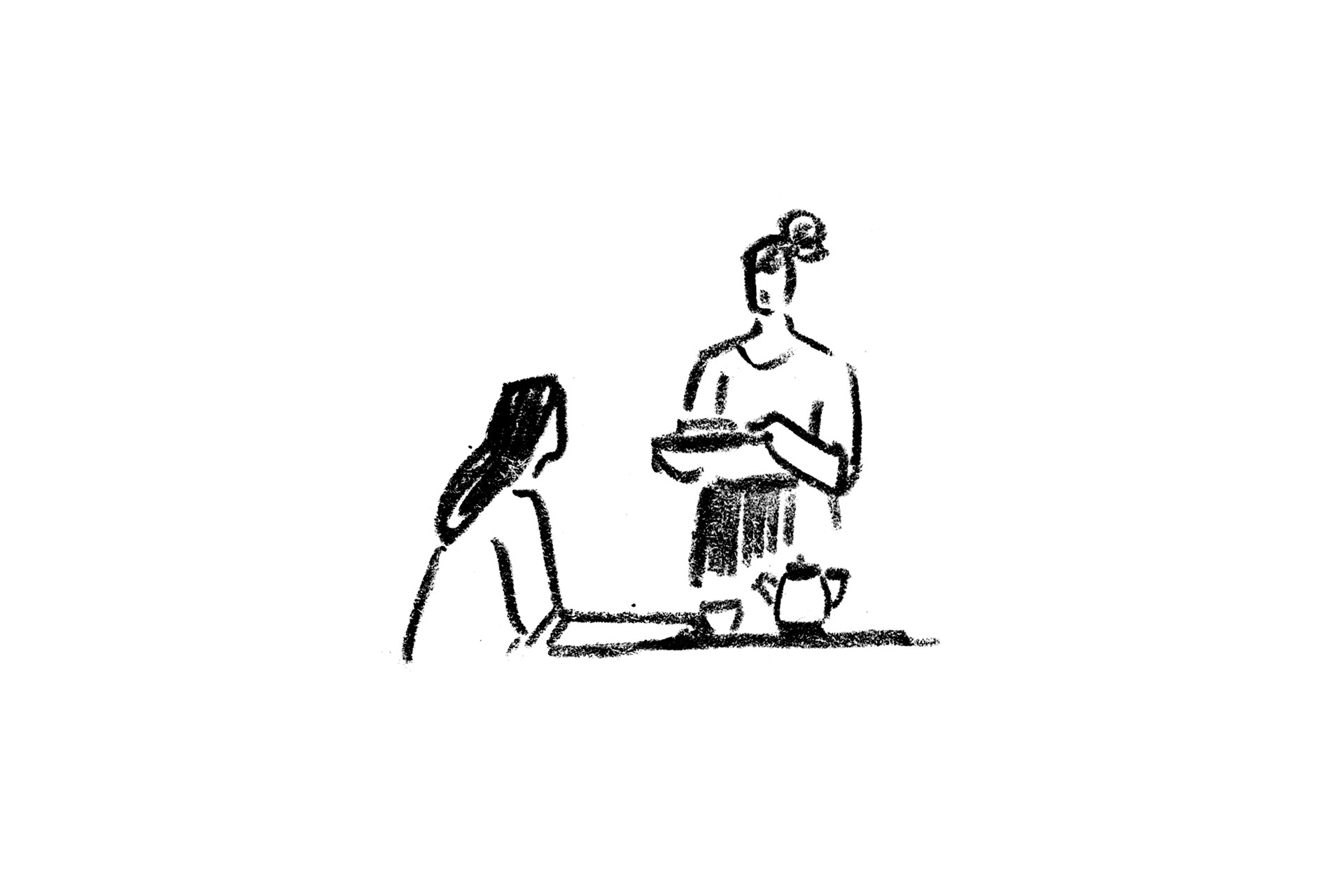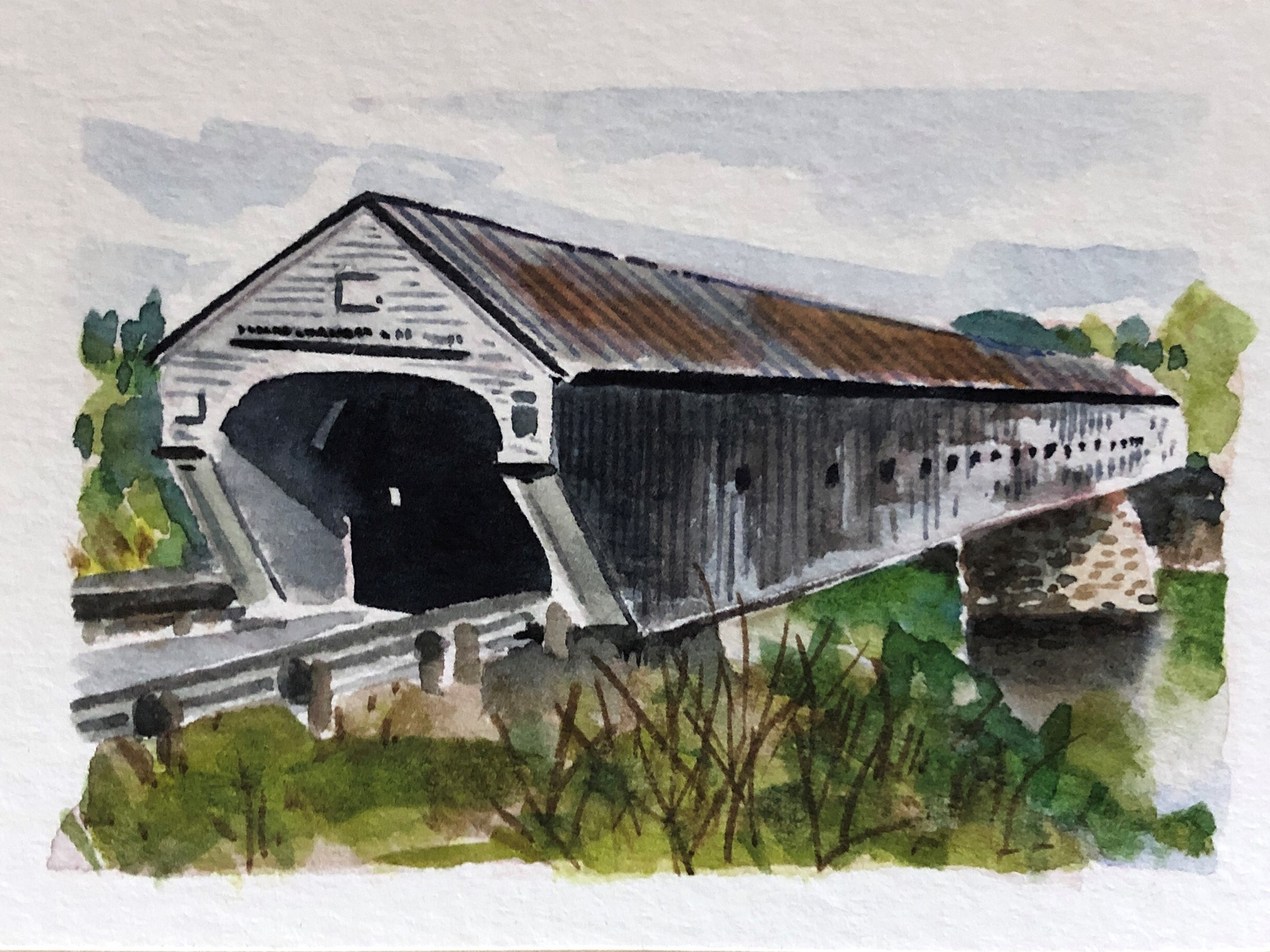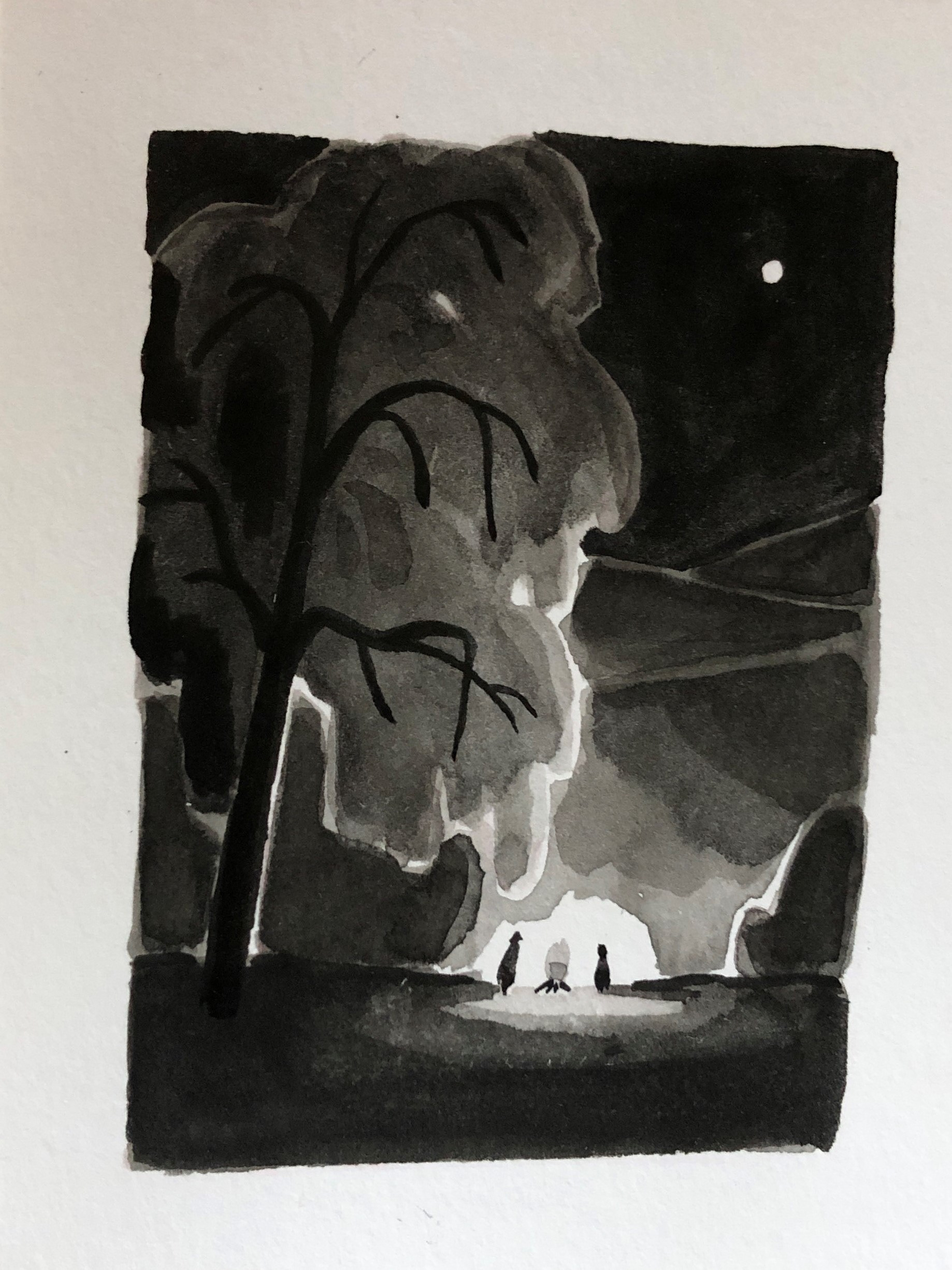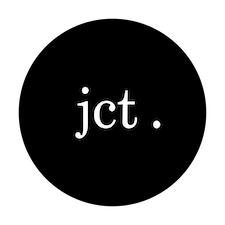By Hazel-Dawn Dumpert
The black-and-white drawings of the artist Agnes Lee are deceptively simple; if you’re a fan of The New York Times column, “Metropolitan Diary,” you will have seen them capturing not just the mise en scène of a New York minute—a lunch counter waitress and patron, a pedestrian vs. taxi faceoff—but, in their sure and succinct lines, the essence of its potent emotional energy as well. A scroll through Lee’s Instagram reveals gorgeous watercolor landscapes, so looming in their scope and lush in their sweeping brushstrokes that it’s startling to discover they are tiny, some only two-by-two inches. All of which is to say that Lee knows how to both inhabit and transcend a frame.
She echoes it in person; at 34, she is diminutive while exuding the bright-eyed physical ease of an athlete—her chosen sport (or, “the other great obsession of my life” as she puts it), Ultimate Frisbee, is itself a way of extending reach—and though she punctuates her speech with the self-conscious laughter of a self-professed shy person, she is an open, engaged talker.
On a grey November day, with winter just beginning to nip, Lee sits outside a Windsor café to discuss her time in the Upper Valley as the 2021 autumn recipient of the Cornish CCS Residency Fellowship. Founded by the artist and New Yorker cartoonist Harry Bliss, and James Sturm, co-founder of the Center for Cartoon Studies (CCS) in White River Junction, the residency offers a $3000 stipend and a month in the guest house of the Cornish property belonging to Bliss (and, once upon a time, to the writer J.D. Salinger). Lee, a Bay area-to-New York transplant, is the first artist to occupy the guest house after the residency was paused for the pandemic. There on the hill in Cornish, she found the time and space to ease up, spread out, and push past boundaries.
Agnes Lee, photo by Hazel-Dawn Dumpert
Hazel-Dawn Dumpert: So, when you were growing up in the Bay area, what drew you to art?
Agnes Lee: I was always one of those kids that drew all the time. I was really interested in the Disney movies, actually. I watched The Lion King to the point where I think I could have recited the script by heart! I just loved animated movies. And then I got really interested in anime, like, Sailor Moon was a really big part of my early years, and just drawing that style.
I wanted to pursue art but my parents were very against it, that classic story. So when I went to UC Berkeley, I was originally going to study engineering; then about halfway through I switched to art. But, Berkeley’s not exactly known for its art program, so I kinda felt like I was missing something. After I graduated, I applied to Art Center College of Design in Pasadena, and I went there for about three years and really worked on foundation skills for drawing. I was interested in editorial illustration, like, dreaming of the big life of freelancing [laughs]. I also learned about graphic design there—I felt like it was a little more of a stable route, because I took out a really big loan to go to Art Center.
After Art Center, I moved back to the Bay and worked as a fellow at Chronicle Books. I did a lot of cool stuff there; I was really interested in book design. Then from there I interned at Airbnb, and from Airbnb, I moved to contracting for Facebook. Then I decided “oh, I just really want to draw.” I was just tired of doing stuff for other people. Tech is just very heavy-handed in the Bay area, and it has a very specific style and feel, every company has their own style guide, it wasn’t so much that we could draw in our own voices, if you will. So, a former classmate and I made the big move to New York, and I freelanced for about a year and a half.
Hazel-Dawn: With who?
Agnes: I did stuff for the Times, I did one thing for The New Yorker, I did a bunch of stuff for AARP, some smaller things, Entertainment Weekly was one of them. So a lot of random publications.
I’m not very good at promoting myself [laughs]. I always found it really awkward, so I probably did not put in as much effort into getting my name out there, because I just felt so painfully shy about it.
But then, thankfully, after about a year and a half, one of the New York Times art directors I’d worked with contacted me asking if I was interested in art directing. So I joined the Times as an art director in the digital news department. That was really great experience, to be kind of on the other side of things. I went from there to Smarter Living, then I went back to contracting for Facebook. I recently quit that, and I’m going to start a full-time job at [the financial tech site] Plaid at the end of the month. So professionally, my career has been all over in these different companies, but during that whole time I’ve tried to freelance where I could.
I guess my most famous gig is being the illustrator for the “Metropolitan Diary” column. Which kind of fell into my lap. When I was working as an art director, they were trying to revive interest in the column, which had been around since, like, 1976. They wanted to add illustration to it; they didn’t have any budget for it, but they knew I could draw, so it all really worked out in my favor. I’m still illustrating that. It’s been a really fun, consistent job to have.
Hazel-Dawn: It sounds like a lot of your career has been navigating that push and pull between having to do stuff to pay bills, and wanting to do your own stuff.
Agnes: Yeah, exactly. Because those loan payments are still there.


"Metropolitan Diary" images by Agnes Lee, courtesy of The New York Times
Hazel-Dawn: How did you find out about the residency?
Agnes: I was taking an animation workshop from CCS and I guess I also signed up for their newsletter [laughs]? They were talking about the residency in one of the newsletters, and it sounded perfect! A month away from everything?! And in nature? Beautiful New England fall? A lot of the residencies that I had seen were more collaborative, you would talk with somebody, there would be a lot more, I don’t know, oversight. And what I really liked about this residency is that it was time for yourself to just work on your own projects in whatever way that looked liked. And I appreciated that because I think people work in different ways and need different things.
Hazel-Dawn: So, how do you like it up there in Cornish?
Agnes: It’s great! Oh my god, it’s everything I expected it to be!
Hazel-Dawn: Really?
Agnes: Yeah!! And so much more. I knew it would be a great step away from New York, and such a literal breath of fresh air. It’s so nice to be surrounded by trees, not having to hear car alarms [laughs], and just having a very quiet space for myself. Our apartment in New York is fine, but I have this very small desk to work on and I feel like my work has shrunk because of that. But here I have all this space—and it’s not even that much space, it’s just, like, a wider desk, but it just feels so freeing.
Hazel-Dawn: Describe a typical day up there on the hill.
Agnes: I think I’m a pretty uptight person [laughs]. I need to schedule things out, otherwise at the end of the day, if I don’t do anything, I feel really, really guilty. But maybe that’s okay, too. There’s a time and place for that. But for me, I need to structure my day. I joined a gym in Claremont, so I usually wake up around six, six-thirty, go to the gym, come back, have breakfast, do The New York Times crossword puzzle, which I’m not very good at, but it’s better! And then, I’ll go into the little workroom area and I’ll just sit and draw. I’ll either try to loosen up by just drawing or painting whatever, or if something is on my mind for the comic book that I’m working on, then I’ll work on that. And then if I need some fresh air and the weather is nice, I’ll go outside and work on my Frisbee throwing, I brought a net up here and eleven discs [laughs]. It gets the blood pumping. And I’ve taken a walk, I think it’s called Top of the World, it’s like a very short hike down the road, so I just do that.
It’s a lot of quiet time. Which took a little getting used to in the beginning. But, it’s been really nice.
Hazel-Dawn: Have you been by yourself the whole time?
Agnes: Yeah. Yeah, there’s not too much service up there, like one or two bars, so I don’t get too much data, and the Wi-Fi from the main house to the garage apartment is very weak, so I don’t even have Wi-Fi. So I bought a four-dollar radio the other day [laughs], and that’s actually been really nice. But I think the hardest thing is that, at night, I talk with my partner, Eric, and I really wish that we could video chat so I could see the cat—and his face [laughs]!
Hazel-Dawn: What about CCS, had you been there before?
Agnes: I hadn’t. I didn’t even know such a place existed, but I think it’s really cool. To get a Masters in cartooning? I wish I knew about it when I was younger.
They have a really wonderful comics library, so I’ve been checking out a ton of books. Just to be able to read as many comics as I can. I checked out some Tintin, which I had actually never read before, but it’s very beautiful. And then Snapdragon, which was a really good one; Moms, which was done by a Korean artist—I’m Korean, so it was cool to see Korean culture, and it was very funny. Farm 54, which was about, um, I think it was an Israeli woman who went into the army but it was just short vignettes of her life growing up.
I really tried to get a range because that’s what I really love about the comics medium, is you can tell a story whichever way you want. And there are just so many different ways, it could be text heavy, it could be image heavy, how do you handle color, how do you handle line work? The variety is amazing, so I’ve really been enjoying that resource.
And then I did a talk for the students, I talked about my professional career, which I thought would be helpful. When I was at Art Center, we didn’t have too many professional practice-type classes. Especially for editorial illustration—you just kind of hope your work will take you somewhere, or an art director will notice you. There’s a lot of anxiety for graduates, not knowing what they can do with their art skills, so I thought talking about what I was able to do with a background in graphic design and a background in drawing, where that could possibly take them, would be helpful.
Hazel-Dawn: Any other work you are into these days?
Agnes: Like artists? Since coming into the residency, I’ve been looking back at the old masters, if you will. I really like to do watercolors, I’ve been looking at Winslow Homer. I’ve been reading his biography, and it’s really interesting that he wasn’t classically trained, he was just naturally gifted. He was very independent, like he really wanted to make it as a painter, a fine-artist painter, but he had to go through the slog of being an illustrator, which I thought was interesting as well.
Then I also recently read the letters of Vincent van Gogh, which were very, very good. He was just so earnest in his desire to be a good painter, and his desire to be better. I’m a very impatient person [laughs], I want to see changes, like, the next hour. But Van Gogh was very much like “I just have to keep at it, no matter what, just keep at it.” And I was like [in a grudging tone of voice] “oh, yeah, you’re right.” It was good, I felt like reading about those two artists has really helped keep me disciplined. And, knowing that art takes a long time, it’s not just lightning in a bottle.


Tiny watercolors by Agnes Lee
Hazel-Dawn: What’s the comic book you’re working on?
Agnes: It’s called 49 Days. It’s my first graphic novel, and it’s based on this Buddhist belief that, after you pass away, you’re in this limbo state for 49 days, and you either are reborn or you move on to the afterlife. I thought this idea was really interesting. My friend had passed away when we were in college, and because he passed away so young, and it was so sudden and unexpected—you’re always trying to come to terms with it. I wanted to explore that, so in my story, this girl, she wakes up on a beach and it looks like she’s going on a camping trip, but she dies every day without realizing it. She doesn’t know that she’s already gone, so she’s in this limbo state. Eventually she figures out what’s happened, and up to then, it’s her emotional journey of coming to accept what has happened and knowing that she won’t be able to go back. And then I’m also looking into the real-life aspect of her friends and family that were left behind, and how they are trying to come to terms with that.
Hazel-Dawn: And how’s it coming?
Agnes: I think alright! If you had asked me at the beginning of the residency, I would have given a much dodgier answer. I didn’t know how to organize the work. I had written and sketched out a bunch of stuff, but I didn’t know how the pacing would go and things like that. But after reading Van Gogh, actually, I was like “ok, let’s just burn the midnight oil,” and I worked really hard at it, and I think I have the skeleton of the book pretty complete. Yeah, I think I’m at a point where I can share with my editor and not be too bashful about it.
Hazel-Dawn: Who’s your editor?
Agnes: His name Nick, he works for Levine Querido, and yeah, he actually was the one who contacted me, two, three years ago, asking if I wanted to do a comic book. I said yes, and we met for coffee, and then we didn’t speak for two years [laughs]. Because I was supposed to be working on the stuff we talked about! But he reached out last year, and I told him that I was working on this idea, which had originated at a mini-comics class I was taking at SVA, and I was telling him, “I think this could really expand into something bigger,” and he really liked the idea.
Hazel-Dawn: So, how has it been making that shift from illustrating other people’s stories to writing your own?
Agnes: It feels really good! I would not say there’s a big shift, I guess because I had always been drawing my own things and trying to keep up with my own personal practice on the side, it didn’t feel like I had to adjust too much. And I feel like I’ve gotten better at really keeping work divided from personal work. What comes to the forefront is just that it feels very liberating to be able to work on my own stuff.
Hazel-Dawn: Have you always written stories?
Agnes: Yeah, I guess so. I’ve written some really bad, like, fan fiction [laughs]. But I’ve never written a comic of this length. A lot of the comics I’ve done are very short, like one to two pages, maybe sixteen at most. So trying to do something at this large of a scale feels very different. That’s the biggest adjustment.
Hazel-Dawn: One thing I love about your work is that—I mean, illustration and comics necessarily entail a frame, but your frames are very tight, and the lines can be very simple, but there’s still a lot of energy in them.
Agnes: I’m very happy to hear that. I think, when I draw, I feel like the sketch is the most pure form, it has all my intentions and everything that I want. And when I try to take something beyond the sketch, I always worry that I’m going to lose that intention or that purity. So, I’m glad that you say that there’s a lot of energy in things like that. Because it’s certainly something that I try to maintain. There’s definitely a lot of bad things that I go through, because I’m like “that looks too overworked,” or “that looks too fussy.” And if I’ve spent longer than, I don’t know, ten minutes on a watercolor, then I’m like “aaahh this is too long!”
Hazel-Dawn: So you intentionally try to get something on the first few strokes?
Agnes: Yeah, I try. I feel like there has to be a level of confidence that has to be translated onto the page in that beginning. I think that’s why I try to work very quickly, because I’m really afraid of losing that essence.
Hazel-Dawn: So, was there a point in your development as an artist where you were like “Okay, yeah, I got this”?
Agnes: Oh, never. I don’t even feel that now [laughs].
Hazel-Dawn: Really?!
Agnes: I feel like there’s so much to learn, there are so many other, better artists. I just feel like, whatever I can do now, there’s always a higher bar.
Hazel-Dawn: Well, I guess that’s what makes you an artist.
Agnes: Yeah, I think so.
Hazel-Dawn Dumpert is an experienced journalist who’s written about everything from film and music to figure skating and bald eagles. Her work has appeared in, among other publications, The Guardian, Film Comment, The Village Voice, and Yankee.
